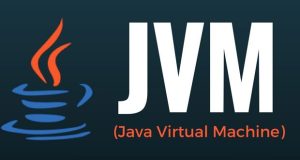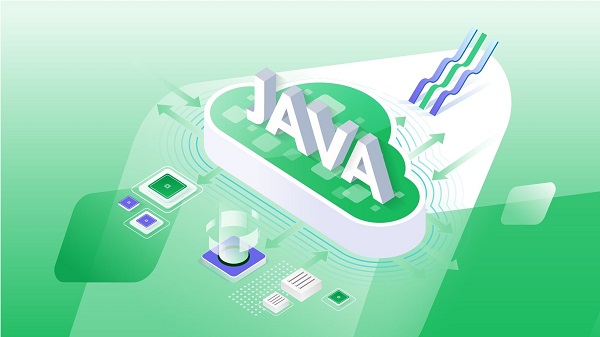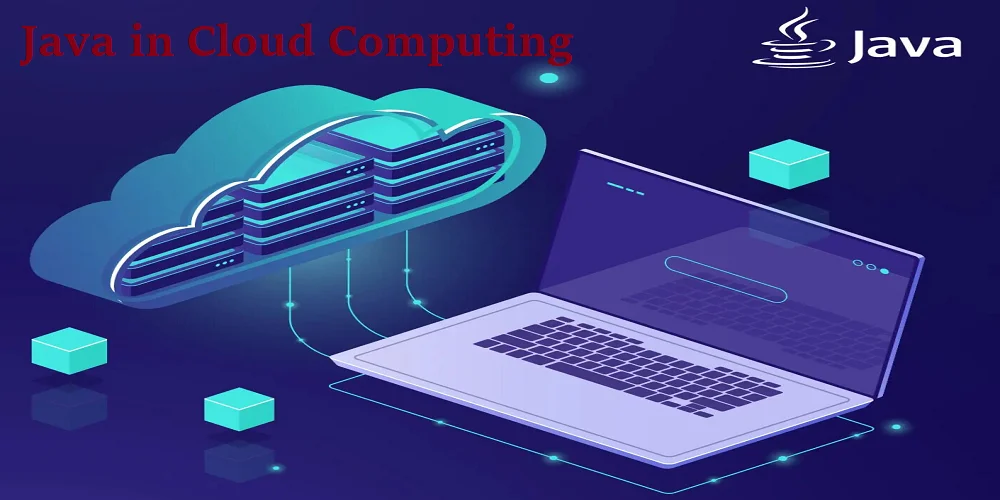In today’s rapidly evolving business landscape, it takes a strategic approach to technology to remain ahead. Future-proofing tech stack Java, the collection of software tools and platforms that power your operations, is no longer optional. This is very critical for ensuring that your business can adapt to the changing needs, scale up efficiently, and maintain a competitive advantage.
In this article, we shall look into the applicability of custom Java application development services for the creation of a future-proof tech stack. It would allow businesses to take advantage of core strengths in Java. We will also look into success stories and go over the most common objections to justify the role of Java in business tech strategies.
The Enduring Legacy of Java
Java is a general-purpose programming language that has led enterprise application development for more than 28 years. Its resilience attests to strong design and a commitment to continuous evolution. Unlike the fashionable languages that come and go, Java has a proven track record of both stability and reliability, offering a strong cornerstone for building mission-critical applications.

Image: JAVA Logo
Core Strengths and Role of Java for Business
Another reason the Java programming language is quite popular as a technology stack is that it has some key properties that make it a perfect foundation for businesses looking to future-proof the technology stack:
Scalability and Performance
Java applications are excellent in processing big data with effective implementation of the most complicated business logic. The Java Virtual Machine (JVM) promises effective memory management and optimized coding in a way that ensures smooth scaling of applications when the business grows. This makes for a great user experience even under high traffic.

Image: The Java Virtual Machine (JVM)
Platform Independence
One of the signatures of Java is that it is “Write Once, Run Anywhere” (WORA). This allows Java-written code to be run on virtually any platform that has a Java Runtime Environment (JRE). It, of course, takes away the headache of working individually for each platform, which saves time and other resources. The Java business success strategies can be used to make cross-platform applications available to a greater audience.

Image: Write Once, Run Anywhere (WORA)
Rich Ecosystem and Community
There is a huge ecosystem in Java comprising libraries, frameworks, and a highly active developer community. This, in other words, translates to readily available solutions to a majority of functionalities that reduce time and cost in development. Frameworks like Hibernate and Spring reduce common development tasks, while libraries like Apache Commons reduce the need to build common functions from scratch. Besides, this active, vast developer community ensures constant support, bug fixes, and new libraries.

Image: Hibernate and Spring Logo
How Java Adapts to Modern Business Trends
It will be an artifact of the past if Java cannot go on to make improvements and match the ongoing trends in the software development world. This will keep it relevant in the role of Java in innovation. Here’s how Java takes a modern approach to things:
-
Cloud-Native Development
The first time cloud computing came into the picture; it brought about a radical change in the way applications are deployed. This means Java frameworks like Spring Boot are made natively for clouds and enable an easy deployment and management process in the cloud. Thus, avails the potential for businesses to scale out and lower costs using cloud infrastructure.
-
Microservices Architecture
The second important concept here is the microservices architecture. Modern applications are increasingly designed in a microservices architecture, dividing the application into smaller, independent services. So, to this end, the modular nature of Java fits perfectly. Developers can create services fine-grained, and loosely coupled in Java, further promoting agility and ease of maintenance.
-
Big Data and Analytics
The harnessing of the power of big data is at the core of business today. Java tightly integrates with the most popular big data frameworks such as Apache Spark and Hadoop, allowing businesses to process and analyze huge sets of data, bringing out meaningful insight.
Table: Key Java Frameworks and Their Applications
| Framework | Description | Use Cases |
| Spring | Open-source framework for building enterprise applications | Simplifies development of web applications, microservices, and cloud-native applications |
| Spring Boot | An Opinionated framework built on top of Spring | Accelerates development of cloud-native applications with auto-configuration and minimal boilerplate code |
| Hibernate | Object-relational mapper (ORM) for interacting with databases | Simplifies data persistence by mapping Java objects to database tables |
| Struts | Open-source framework for building web applications | Offers Model-View-Controller (MVC) architecture for structured web development |
| JavaFX | Toolkit for building rich client applications | Ideal for developing desktop applications with graphical user interfaces |
Case Studies
Case Study 1: Netflix
- Challenge: As Netflix’s user base exploded, its infrastructure needed to handle millions of concurrent users streaming content seamlessly. Traditional architectures struggled to keep pace with the demand.
- Solution: Netflix adopted Java for its backend infrastructure due to its scalability and performance capabilities. Java’s efficient memory management and code optimization allowed them to build a robust system that could handle high traffic volumes.
- Result: By leveraging Java, Netflix achieved a scalable and performant backend that delivers a smooth streaming experience for its global audience.
Case Study 2: Uber
- Challenge: Uber’s core functionalities like user authentication, trip matching, and real-time location tracking require a highly reliable system capable of handling a massive number of transactions. System downtime or slow response times could significantly impact Uber’s ability to operate efficiently.
- Solution: Uber utilizes Java for its core backend services due to its reliability and ability to handle high transaction volumes. Java’s robust nature ensures the system can function smoothly even under peak demand.
- Result: By building their core services on Java, Uber achieved a reliable and scalable backend that can handle the high volume of transactions required for their ride-hailing operations.
These examples show how the Java technology business impact is extended across nearly every type of industry. Scalability, performance efficiency, and flexibility in building modern architectures place Java as a key player in the future-proofing of the tech stack.
Java vs Emerging Languages
The technology domain is running at a faster pace, where new programming languages are growing in large numbers around every place. The common question asked in the back of the mind is: Is Java outdated as compared to those newer languages? Whereas it may be true that other new languages are being designed with new and different features, there are several reasons why Java is still relevant.
Proven Track Record and Stability
Java has a long history of running some of the most complex enterprise applications. Businesses can depend on its stability and proven best practices for building reliable and secure systems.
Large Talent Pool
Java developers are one of the biggest and most experienced groups within the IT industry. That means easy recruitment and all the resources will be available for business with a requirement for Java expertise.
Integration with New Technologies
Java is not a closed ecosystem. It integrates easily with languages and frameworks that are newer. Businesses can leverage Java’s core strengths as a foundation while utilizing newer technologies for specific functionalities.
In essence, Java isn’t competing with every new language that emerges. Java business success strategies focus on leveraging Java’s strengths as a foundation for building robust and scalable applications, while strategically integrating newer technologies when needed.
Benefits of a Java-Based Tech Stack
Building your tech stack around Java offers a multitude of advantages:
- Security: Java prioritizes security from the ground up. Features such as sandboxing and good type checking make it difficult for attacks to be discovered, ensuring application development security.
- Maintainability: Java is generally readable and modular, providing an easily understandable form for developers to maintain and modify existing code, therefore lowering the cost over time.
- Cost-Effectiveness: The vast pool of Java developers translates to competitive development costs. Java is also open-source, which means that there are many libraries and frameworks available, reducing development time and resource consumption.
- Performance: Java applications are known for their efficiency and ability to handle large datasets. This translates to a smooth user experience and a competitive edge in today’s performance-driven environment.
Java business success strategies leverage those strengths to deliver applications that are safe, productive, and maintainable over the long term.
Future-Proofing with Java

Image: Virtuslab
The rule of being future-proof with Java: Learn continuously and adapt. Now, how developers and businesses can stay ahead of the curve:
-
Embrace New Features
From time to time, new versions of Java are released that bring new features and functionalities. They must keep abreast of these new developments and use the new capabilities of the language.
-
Study Frameworks and Libraries
The vast Java ecosystem offers a wealth of frameworks and libraries that simplify development and address specific needs. Therefore, actively research these elements to develop your skills, develop applications aligned with contemporary trends, and build real projects.
-
Stay Connected with the Community
The Java developer community is very vibrant and active. Be active on online forums, attend conferences, and follow the leaders in the industry. Be informed of best practices and what’s next.
A culture of continuous learning will keep the Java skillsets of the business and developers at a pace that ensures the investment contributes to a future-proofed tech stack.
Building a Future-Proof Development Team
The most common and core key success factor in realizing fully the advantages and capabilities of a Java-based tech stack is a professional, experienced Java development team. How to hire and retain the best Java talent:
Competitive Compensation
Offer competitive pay and market-adequate benefits packages to procure and retain the best Java developers.
Skill Development Opportunities
Improve your team’s potential through an investment in their growth, providing them with opportunities to develop their skills, such as attending conferences or online training courses.
Create a Positive Work Culture
Foster a collaborative and supportive work environment where developers feel valued and motivated to contribute their best work.
Through assembling a great team of Java developers, a business could ensure that it has developed the skills to leverage Java in such a way that it’s destined to result in a successful business.
Conclusion
Java’s legacy, the durability of its ecosystem, and its rich adaptability undoubtedly make it the cornerstone of future technologies. Business success strategies unleash the power and role of Java to develop secure, scalable, and maintainable applications. It empower businesses in this dynamic technological landscape.
All these would be possible through nurturing a talented development team, embracing continuous learning, and adopting Java with new technologies in a strategic manner. Businesses can enable such adaptable and ever-ready tech stacks against the demands and opportunities of the future.
Frequently Asked Questions (FAQs)
1) What are the prime advantages of using Java for business applications?
Java offers several advantages for business applications, including platform independence, robustness, and extensive libraries and frameworks that streamline development.
2) Is Java outdated?
No, Java is not outdated. Certainly, there are newer languages and paradigms, but the rich history, huge ecosystem, and constant evolution make Java still a major player in building future-proof tech stacks.
3) Is Java difficult to learn?
Java has a steeper learning curve in comparison to many of the scripting languages. On the other hand, its syntax is very well defined and there are quite a lot of resources for learning it, so it is a good language to invest time in. For many people, the long-term benefits of Java expertise outweigh the initial learning challenges.
4) With new languages emerging, how can Java still deliver a positive business impact?
Java’s established record, mature ecosystem, and adaptability ensure it continues to deliver a positive Java technology business impact. Businesses can leverage their strengths to build secure, cost-effective applications that remain relevant in the ever-changing technological landscape.
5) Is not Java a mature language? How does it still play a role in innovation?
Absolutely! Java is a mature language. The role of Java in innovation remains significant. Java’s strong foundation aligns with modern architectures, integrates seamlessly with cutting-edge technologies, and fosters a developer-friendly environment, all contributing to continued innovation.



